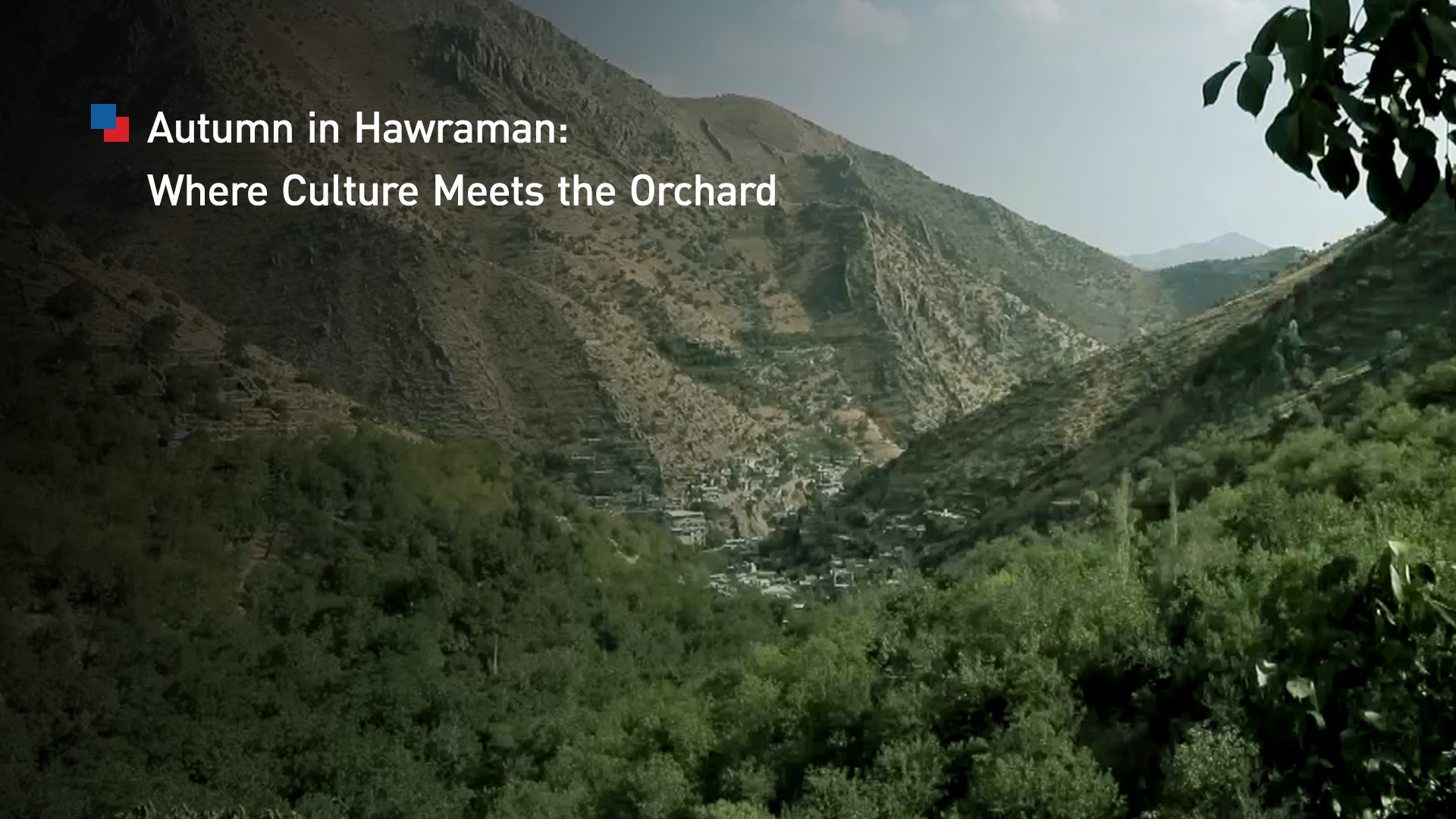Hawraman Harvest: Families Unite for Walnuts and Tradition
Autumn brings a vital economic boost and a cherished cultural tradition as men, women, and children work together to gather Hawraman’s prized walnuts.

ERBIL (Kurdistan24) — As autumn settles over the scenic highlands of Hawraman in the Kurdistan Region, families gather in orchards and along mountainsides to harvest one of the area’s most prized agricultural products: Hawraman walnuts.
The harvest season, which typically peaks in late September and October, is not only a significant source of income for local farmers but also a celebrated cultural tradition passed down through generations.
Amid the tall trees and terraced orchards, men, women, and children work together to gather the walnuts, carefully shaking branches to release the ripe nuts onto prepared nets or tarps.
Farmers often space the trees between four to six meters apart to allow the nuts to fall safely and reach the highest branches. Traditional wooden poles are used to reach walnuts that grow higher on the trees.
Azad Tawfiq, a local resident, told Kurdistan24 that careful attention is needed during the harvest.
“We use long wooden sticks, sometimes from the elder trees we have nearby. When we reach the highest branches, we have to be extremely careful because there are no safety measures, and some trees are old and fragile,” he explained.
The arrival of the fall season and the peak of the walnut harvest bring families together in a communal effort, with women in Hawraman actively participating in cleaning the orchards, shaking the trees, and collecting the nuts.
This cooperative work reflects the region’s traditional practices, making the harvest both productive and socially significant.
Ahwan Abdullah, another resident, said that harvesting walnuts requires coordination between men and women, from preparing the orchard and shaking the nuts to gathering and sorting them afterward.
“It is a collective effort. Everyone works together to ensure the harvest is successful and the orchard is well maintained,” he said.
Hawraman is widely recognized as one of the most fertile areas in Kurdistan. Beyond its appeal as a tourist destination with its picturesque mountains and valleys, the region produces a variety of agricultural products, including walnuts, plums, pears, and figs.
The walnut harvest, in particular, has both economic and cultural significance, sustaining families and preserving local agricultural traditions.
As the season progresses, the sight of families working together under the autumn sun serves as a reminder of Hawraman’s rich heritage and the enduring importance of communal farming practices in sustaining both livelihoods and local culture.
Walnuts are one of Hawraman’s most valuable crops, providing both a crucial source of income and a symbol of the region’s agricultural heritage.
Harvested in autumn, they are sold locally and across Kurdistan, supporting countless families and contributing to the local economy.
Culturally, walnut harvesting is a communal activity that brings together multiple generations, fostering cooperation and reinforcing social bonds.
The work of preparing orchards, shaking the trees, and collecting nuts is often shared among men and women, reflecting a long-standing tradition that blends economic necessity with community values.